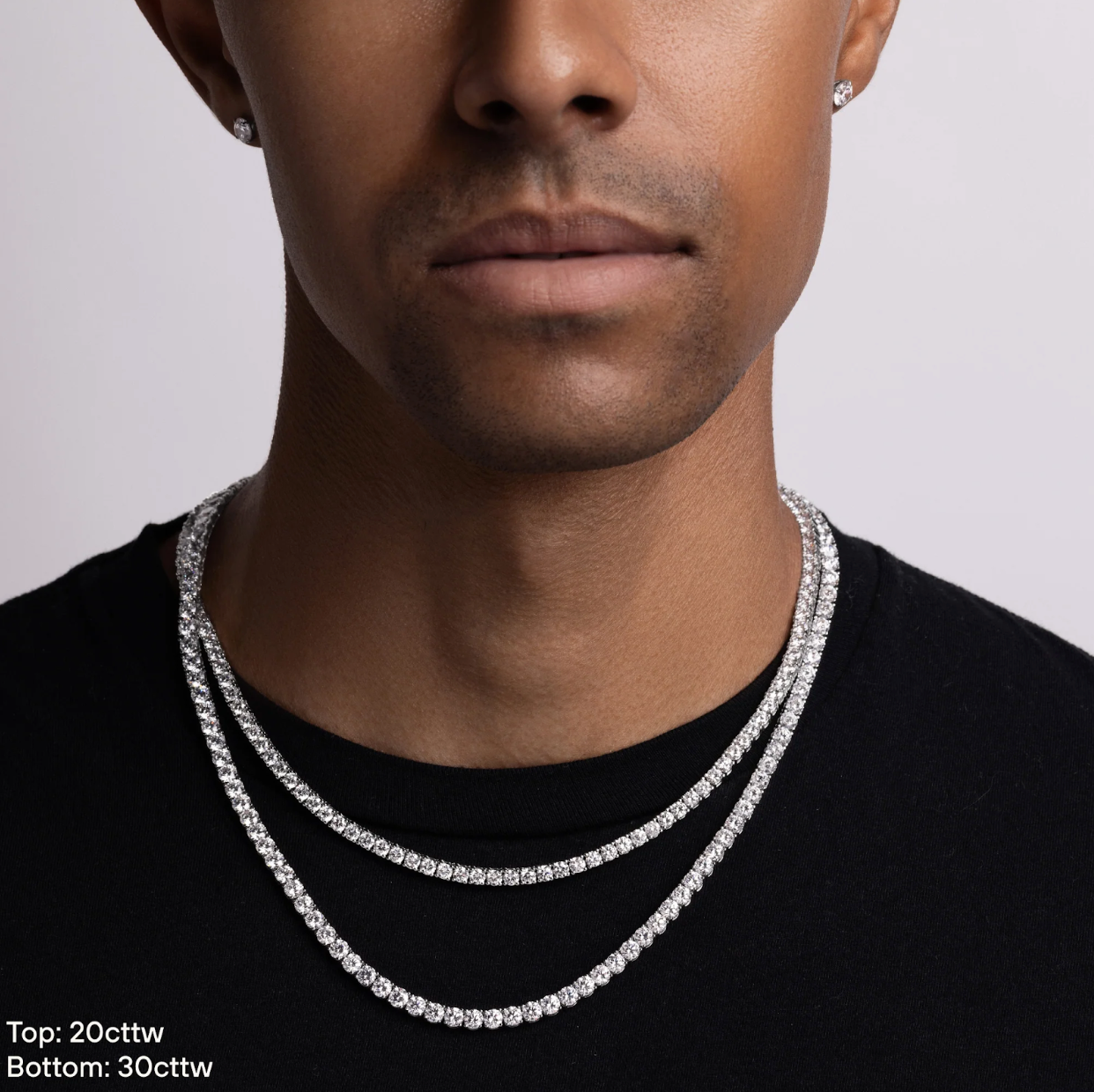You may think that platinum and white gold are close enough in color to be considered the same type of metal, but that couldn’t be further from the truth. While white gold and platinum share visual similarities, they have very different physical compounds that make them two different metals.
So when you ask yourself, “Should I choose white gold vs platinum?” think of these primary differences to help you make your decision for which metal is best for you.
White Gold
We’ll start with white gold first. Yes, white gold is gold, but it is different from yellow gold. White gold is yellow gold that has been mixed with other metals and alloys that give white gold its white color.
The Color
White gold is often plated with a silver-white coating that exemplifies the color and shine of the white gold after it has been mixed with other alloys like nickel, zinc, and copper. One of the metals that white gold may be mixed with is palladium, a white metal that resembles platinum. When white gold is mixed with palladium, it generally has enough white shine that it doesn’t require rhodium plating.
If the white gold ring has not been mixed with palladium, it likely gets its white shine from rhodium plating. Rhodium plating typically lasts between 5 and 10 years, but scratches or other wear and tear, including everyday wear, can require your ring to be replated sooner.
The Cost
White gold is more affordable than platinum because it requires less metal to create a stronger ring. Less metal means less material, and less material means less cost. So if you’re looking for a more affordable metal option when making your initial purchase, white gold will always win.
However, keep in mind that white gold often requires replating when it becomes dull or scratched. In addition, because white gold is mixed with other alloys and often has rhodium plating, it can lose its shine and require replating over time. This may not cost you out-of-pocket at first, but over time you may spend as much money replating your white gold rings as you would purchasing platinum rings.
At Happy Jewelers, all rings include our lifetime warranty, which includes rhodium dipping as needed!
The Quality and Durability
When it comes to durability, both platinum and 14k white gold offer similar features. Additionally, they are both strong enough to withstand everyday wear (which is exactly what you want in an engagement ring or wedding band set).
Platinum has a marginal disadvantage in that it can be bent slightly more than 14k white gold can. However, any scratch that appears on a platinum ring can be polished out, while white gold will likely have to be polished, then replated for the scratch to disappear.
Overall, the quality of white gold is sufficient for everyday wear, and you shouldn’t have to worry about your white gold ring becoming misshapen.
Platinum
Platinum is a very popular metal choice because of its color and quality alone. These two features are nearly unmatched when comparing to white gold, but there are some considerations you need to take before deciding that a platinum ring is best for you.
The Color
Platinum is naturally white and makes up more than 95% of the composition of platinum rings. Unlike white gold derived from yellow gold, platinum is naturally white and doesn’t require other metals or alloys to make it appear white. White gold rings can have a slightly beige tint because they are made from yellow gold, while platinum rings will be brilliant white and require no additional color enhancers.
The Cost
Platinum rings and other platinum jewelry are considerably more expensive than white gold jewelry and rings because they require a substantial amount of platinum to make the ring durable. Because of this, platinum rings can be 40 to 50% more expensive than white gold. However, that is typically a one-time upfront cost because platinum rings don’t require replating if they become dull. A simple polish will restore the natural white shine that is found in a durable metal like platinum.
The Quality and Durability
The downside to platinum is that it is a more malleable metal, making it susceptible to warping if it makes a significant impact against a hard surface.
Platinum vs White Gold: How to Decide?
If you’re still on the fence about which type of precious metal is best for your ring, then you may want to consider your skin type to help you make your decision.
18k white gold is approximately 75% gold, and 14k white gold is approximately 58.3% gold. White gold has to be mixed with other metals and alloys to make the gold silver-white. Gold is commonly mixed with nickel to help make the color white gold.
Nickel is a common skin allergy and can cause you to break out or itch when your skin comes into contact with it. If you have sensitive skin or a known nickel allergy, you should consider platinum as the metal choice for your ring. Platinum is a hypoallergenic metal. While it may cost more, it will keep you from suffering from the rash or itching that a white gold ring will cause in the long term.
Conclusion
White gold and platinum alloy are similar in appearance, but there’s more to them than what meets the eye. White gold will be cheaper upfront than platinum, but maintenance and upkeep costs can add up over time, making them comparable in price. So, gold vs platinum…
Ultimately, if you have sensitive skin or a nickel allergy, you should choose platinum for your ring. Platinum will not only keep your skin from breaking out, but it will also remain shiny and white without the need to be replated the way white gold requires.
We hope this has helped you understand the difference between the two metals and know which metal you should choose for your wedding ring.





Share:
The Complete Guide to Buying Diamond Stud Earrings
Radiant Cut vs Cushion Cut